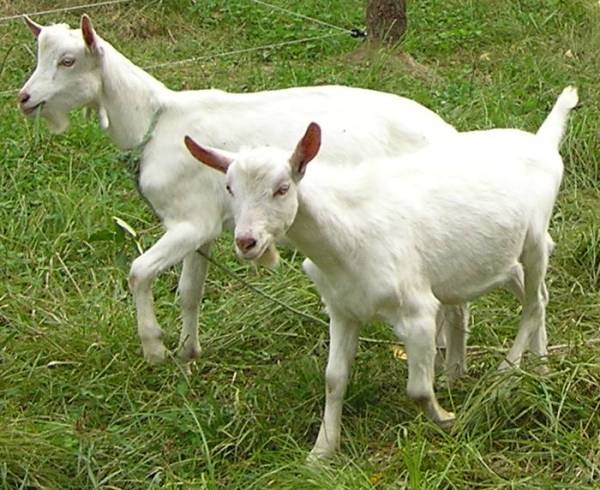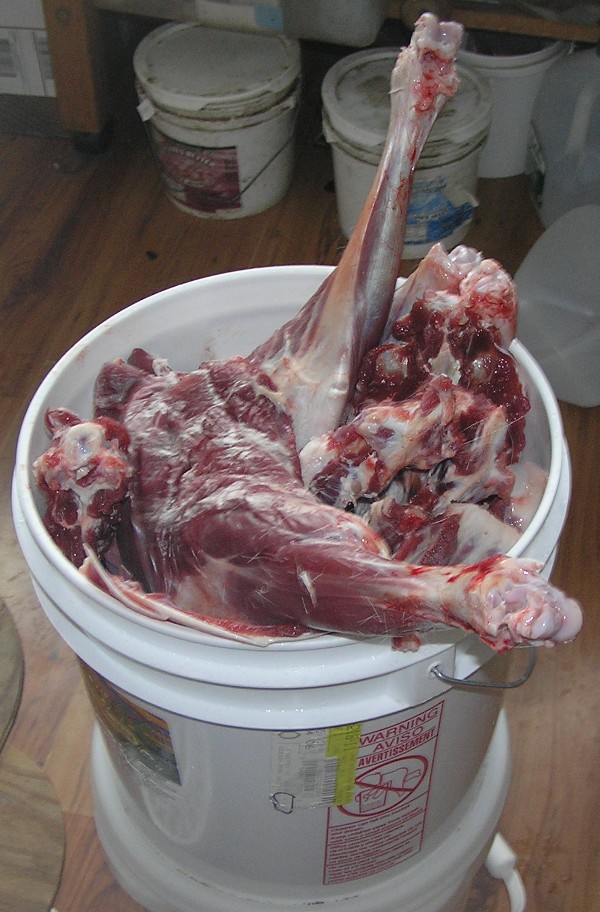Today was a slaughter day. Time to prepare the various unproductive males for their "next stage"...
Slaughtering is never pleasant, but a necessary evil if we are going to breed animals. The facts come down to we cannot support an ever growing population, maybe humans should take note.
I had been planning to keep the buckling, Alarm, through breeding season to breed to our one unrelated doe, Heddar. Alarm comes from one of our original does, Sparque, and Heddar comes from the other, Ruffles. But I realized we already have that genetic mix (last years bucklings, same dam and sire bred to this target doe gave us this springs doeling, Able). So there is not a lot of sense breeding Alarm to Heddar. It's further redundant because the other does from this spring all come from that Sparque Sire mix, either first generation or one generation out. Heddar is our only animal not related to Sparque and her suitor from last year. I bred Sparque to same Buck three times waiting for her to give us a doe. In the meantime, I bred one of her bucklings to Heddar and Ruffles last fall. So it's important that we get Heddar bred to a new line in order to get some balance back in our genetic diversity. Breeding Alarm to Heddar does save us $50 in breading fees, but that wasn't enough of a reason.
And now, we don't have to keep the buck separate from the does going into breeding season. That greatly simplifies our paddocks. Pretty soon the kids will be weaned and we won't need any subdivisions. Woo Whoo! Sad for Alarm, good for me.
So, Alarm was just about three months old. He was coming into sexual maturity and he yielded about 30 pounds of meat, bone in. That's pretty interesting because last years bucklings I slaughtered in Late winter and they were also 30 pounds bone in. It was winter, and they were on hay only. This buckling has been nursing and getting Lamb and Kid grain. In addition to the meat, he had significant organ fat and fat under the skin. The boys from last year had very little fat. Again, time of year and ration. But still interesting that going into the fall Alarm had as much meat and more reserve as the boys twice his age and similar genetics (they were all brothers from the same dam and sire). And the boys from last year looked good and performed well (the breeder buckling sired three does by Heddar and Ruffles).
I didn't face any quandaries about the Roosters. We had a clutch hatch earlier this summer and they are well along. The Roosters' days have been numbered since. It was just waiting for an ambitious day. It didn't help that the dominant rooster was attacking the back of my legs on a periodic basis. And they were waking us up at slightest provocation. Killing sucks, but I am not going to miss the roosters.
My PI cleared up by the way, in less than two days without more than a light rash. I am going to claim the prompt washing helped. If anyone cares.
Labels: Butcher, chickens, goat, Slaughter







